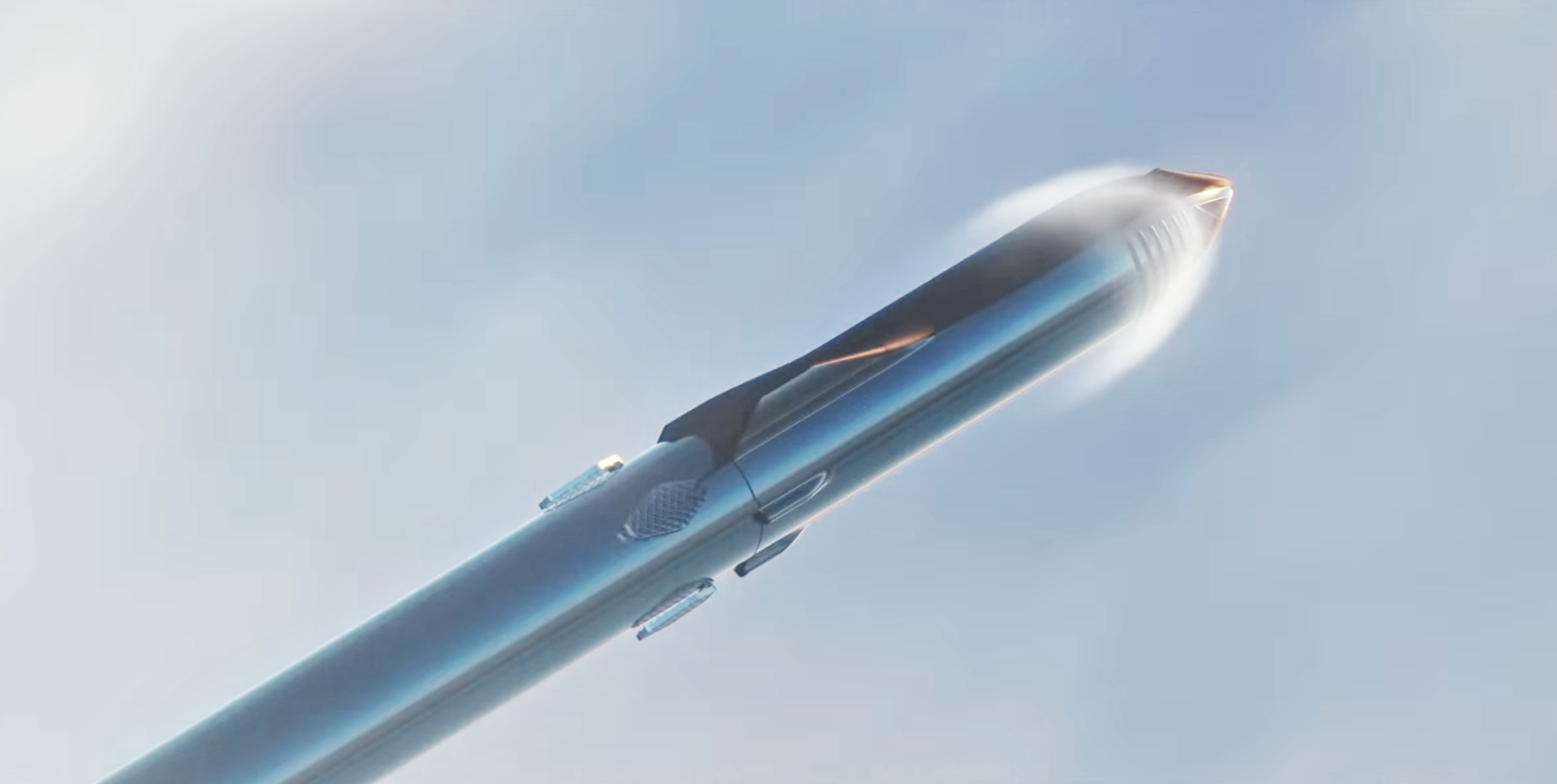
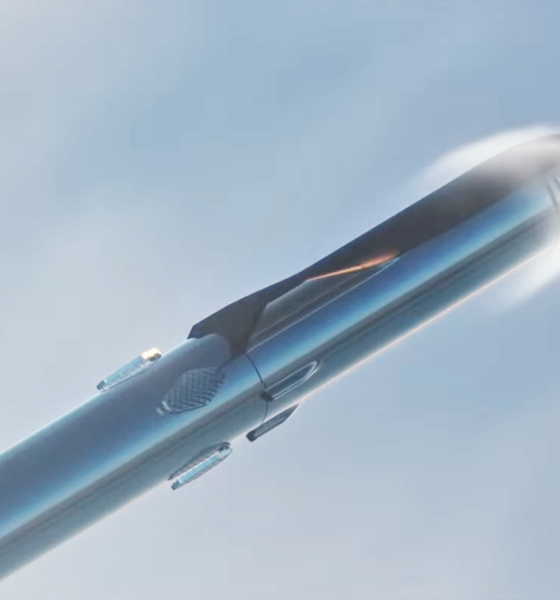
News
SpaceX CEO Elon Musk lays out Starship’s path to orbit with sights set on 2020 debut
Speaking on September 28th, SpaceX CEO Elon Musk sketched out a fairly detailed picture of Starship’s path to orbit, from the first flight of the first full-scale prototype to the spacecraft’s inaugural orbital launch atop a Super Heavy booster.
Incredibly, Musk was persistent with claims that he has challenged SpaceX’s Starship teams to conduct the next-generation rocket’s first orbital launch within six months, drawing a line in the sand around April 1st, 2020 (?). How, then, does the SpaceX CEO foresee the next year or so playing out?
A whole lotta ‘Ships
As is the company’s signature, Musk confirmed that the Starship development program will continue to be highly distributed, hardware-rich, and focused on an iterative and continuous process of learning by doing. Starhopper is perhaps the best emblem of this methodology, defying almost every conceivable aerospace industry norm to successfully build and repeatedly fly what was essentially a rocket built outside by water tower welders.
Starhopper may have scarcely been meant to fly at all, serving almost entirely as a proof of concept and learning experience, but Musk strongly suggested that future Starship prototypes will replicate its highly iterative, learning-on-the-job approach to development. In short, much like SpaceX has nearly completed Starship Mk1 (and Mk2) from scratch in less than six months, SpaceX’s development strategy involves building a lot of Starship prototypes as quickly as possible.
Specifically, Elon Musk stated – in his opinion – that SpaceX will likely attempt its first orbital Starship-Super Heavy launch immediately after Starship Mk1’s first flight attempt, a suborbital launch to ~20 km (12.5 mi). Assuming that test – far more critical than any of Starhopper’s travails – is successful, the very next Starship flight could be an orbital launch attempt.
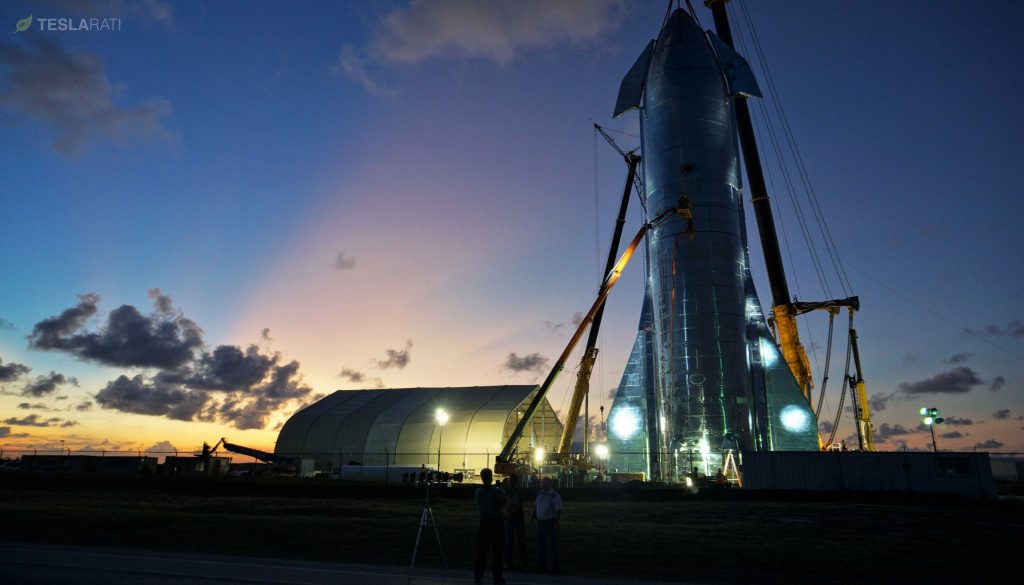
First and foremost, Musk was pretty clear that the rough schedule he laid out was a “stream of consciousness”. Indeed, the eccentric CEO contradicted (or updated) himself over the course of answering the same question, stating that “[SpaceX] would fly to orbit with [Starship] Mk3” before saying that that it would actually be “Mk4 or Mk5”. Musk is still undoubtedly set on announcing gobsmackingly ambitious schedules for his projects, but it’s worth noting just how serious he seemed while discussing Starship’s development timeline.
He noted that SpaceX will likely “have [Starship] Mk2 built within a couple of months – or less”, referring to the second prototype currently in the late stages of integration at the company’s similar Cocoa, FL facilities. Additionally, Musk indicated that Starship Mk3 – yet to begin construction in Boca Chica – could be finished as few three months from now (around the start of 2020), with Starship Mk4 – to be built in Florida – could be just one to two months behind (NET Feb/March 2020). Correcting his previous statement, whether intentional or not, Musk also added that SpaceX’s first orbital Starship launch attempt would likely involve either the Mk4 or Mk5 prototype and occur “less than six months from now”.
As a slight consolation to the eyewateringly ambitious timeline he laid out, Musk qualified his “six months to orbit” target by acknowledging that it would only be achievable “provided the rate of design and manufacturing improvement continues to be exponential”. If that remains the case, as he believes it has been over the last six or so months, then SpaceX could be ready for the first orbital Starship launch attempt as few as 6-9 months from now – sometime in the first half of 2020.
A lot will undoubtedly have to go very right for that to remain anywhere within the realm of plausibility. This includes the rapid maturation of Starship’s Raptor engine and vacuum-optimized variant, the successful completion of Starship Mk1’s 20km flight test, the assembly and static fire of the first Super Heavy booster(s), the construction of brand new orbital launch facilities, and the FAA’s approval of all aforementioned flight operations.
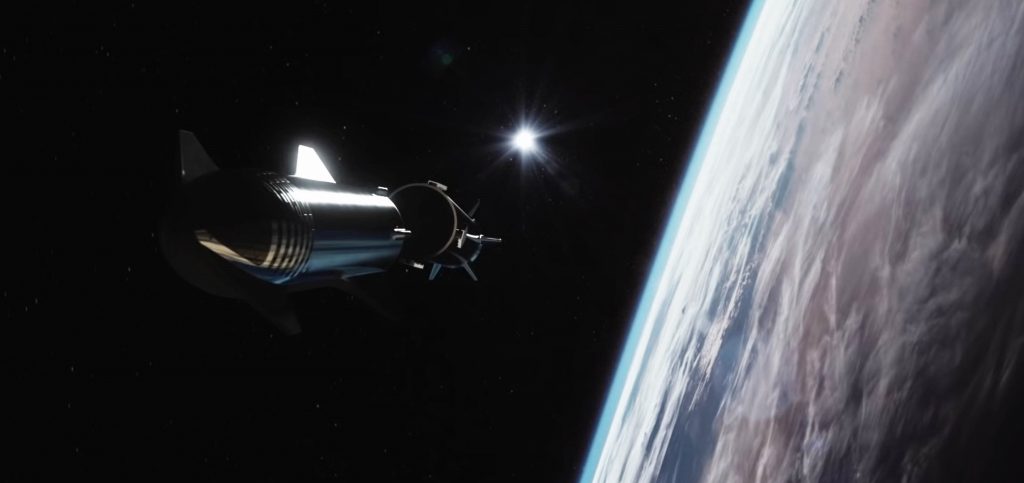
Needless to say, the odds are heavily stacked against Musk’s goal of reaching orbit within six months. There is undoubtedly a chance that SpaceX can pull it off, even if success would essentially involve constructing a bridge while driving off a cliff. However, the most important thing to note is that even if Elon Musk is a factor of 1.5, 2, 3, or even 4 times off and Starship reaches orbit for the first time 12 or 18 or 24 months from now, it will still have been an incredibly brisk period of development for a rocket as large, high-performance, and ambitious as Starship/Super Heavy.
It should also be made clear that, while it’s utterly beyond the present capabilities of NASA and other space agencies/companies of the 21st century, Saturn V went from paper to its first orbital launch in just five years. Depending on how one perceives Starship development, it could be said that SpaceX began development – particularly marked by Raptor engine prototype testing – as early as 2016. Suffice it to say that it’s far from impossible that Starship’s first orbital launch will happen next year, even if the challenges SpaceX faces are immense.
Check out Teslarati’s Marketplace! We offer Tesla accessories, including for the Tesla Cybertruck and Tesla Model 3.

News
Tesla FSD earns high praise in South Korea’s real-world autonomous driving test
As per the Korea Expressway Corporation’s report, the FSD test was conducted on December 15, 2025, from 10 a.m. to 6 p.m.

Tesla’s Full Self-Driving (FSD) has received a bullish assessment from the Korea Expressway Corporation following a real-world autonomous highway driving test.
A report of the test, shared on Naver Cafe, showed high praise for the system’s safety, capabilities, smooth maneuvers, and confidence.
South Korean highway test
As per the Korea Expressway Corporation’s report, the FSD test was conducted on December 15, 2025, from 10 a.m. to 6 p.m. Four people were in the Tesla that was tested, including the head of the mobility department. All four FSD driving modes were tested, from “Sloth” to “Mad Max.”
To test FSD’s performance, the system was tasked to operate on highways such as Gyeongbu, Cheonan, and Cheonan-Nonsan, as well as city areas in Dongtan New Town, Sejong Special City, and Daejeon Metropolitan City, among others.
Since FSD is only available for the Tesla Model S and Model X that are imported to South Korea from the United States, the system was not tested in a Model 3 or Model Y, which comprise the majority of Teslas on the country’s roads today.
Highway test results
Results showed FSD performing well, both in inner-city roads and on highways. In inner city roads, the testers noted that FSD was capable of autonomous driving at a level that already exceeds that of general human drivers, except in very few areas, such as unprotected left turns and work zone intersections.
In highways, the testers described FSD’s performance as “excellent,” though the system still showed frequent cases of violations in local bus lanes and max speed limit rules. These, however, could hopefully be addressed by Tesla in a future FSD update without many issues. The testers also noted that in some parts of the test, FSD seemed to be driving autonomously in accordance with traffic flow rather than strict traffic rules.
테슬라 Fsd 고속도로 자율주행 테스트 결과 보고 by Simon Alvarez
News
Tesla claims nearly 20% market share as Norway sets new car sales record
Tesla captured roughly one in five new cars in Norway, highlighting its dominance in the world’s most EV-friendly market.
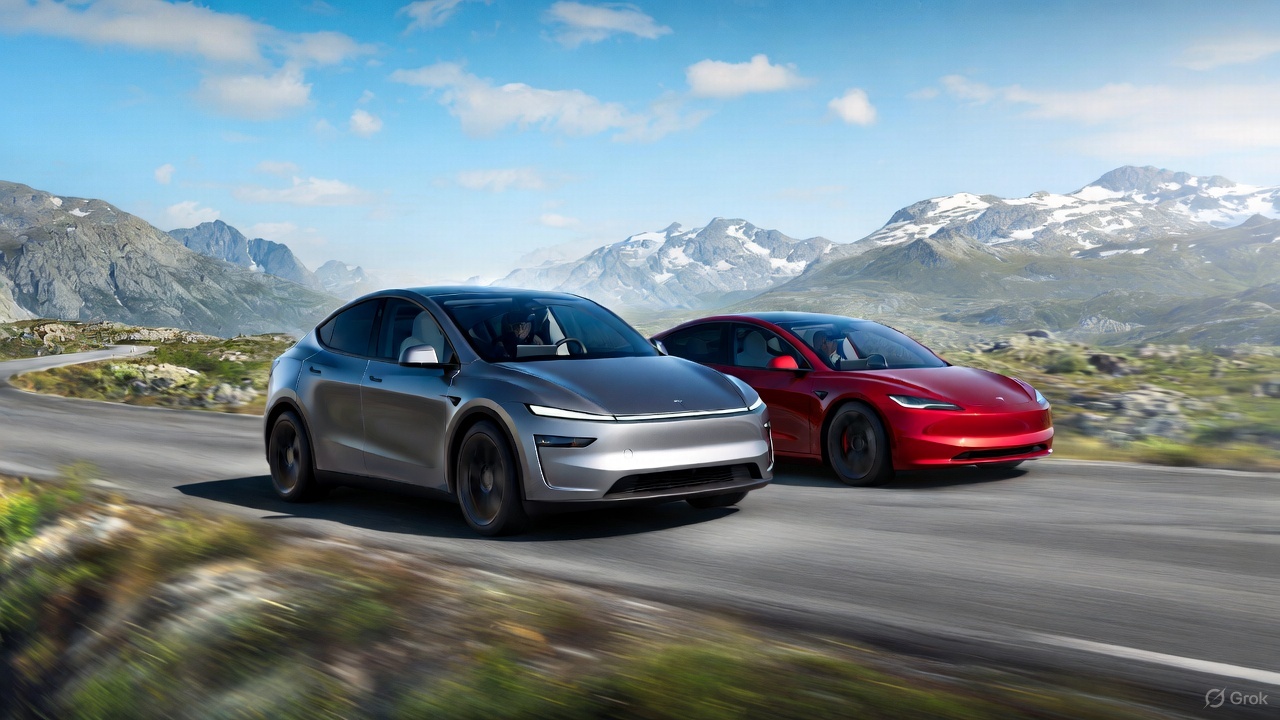
Norway shattered its all-time new car sales record in 2025, and Tesla emerged as the clear winner. A year-end rush ahead of higher EV taxes pushed registrations to nearly 180,000 vehicles, with electric cars accounting for 96% of sales.
Tesla captured roughly one in five new cars in Norway, highlighting its dominance in the world’s most EV-friendly market.
Norway’s EV rush
As noted in a CarUp report, Norway’s electric vehicle sales in 2025 surged, thanks in part to buyers rushing ahead of a post–new year VAT increase of roughly 50,000 kronor on many new electric cars. This ended up pulling demand forward and setting a national record with almost 180,000 registrations in 2025.
The result was unprecedented. From the vehicles that were sold in 2025, 96% of new cars sold were fully electric. And from this number, Tesla and its Model Y made their dominance felt. This was highlighted by Geir Inge Stokke, director of OFV, who noted that Tesla was able to achieve its stellar results despite its small vehicle lineup.
“Taking almost 20% market share during a year with record-high new car sales is remarkable in itself. When a brand also achieves such volumes with so few models, it says a lot about both demand and Tesla’s impact on the Norwegian market,” Stokke stated.
Tesla domination
Tesla led all brands in Norway with 34,285 registrations, which is equal to a 19.1% market share. These results place Tesla well ahead of Volkswagen and Volvo, which held a 13.3% and 7.8% market share in 2025, respectively.
On the model chart, Tesla’s strength was even clearer. The Tesla Model Y topped all vehicles with 27,621 registrations, accounting for 15.4% of the entire market. The Tesla Model 3 also ranked among the top five, accounting for 3.7% of Norway’s entire auto sales in 2025.
Other strong performers included Volkswagen’s ID.4 and ID.7, Toyota’s bZ4X, which commanded 4.9%, 3.9%, and 4.1% of Norway’s total sales in 2025, respectively.
News
Tesla China sees 2nd-best month ever by selling 97,171 vehicles wholesale in December
The results mark Tesla China’s second-highest monthly result on record, trailing only November 2022’s 100,291 units.

Tesla posted a sharp year-end rebound in China last month, with December’s wholesale figures climbing to their second-highest level to date.
The surge capped a late-year recovery for the electric vehicle maker, even as full-year wholesale figures still finished lower year over year. Still, the data highlights how Tesla China’s offerings still resonate with customers in the world’s most competitive electric vehicle market.
Tesla China’s December surge
Tesla China sold 97,171 vehicles wholesale in December, as per data from the China Passenger Car Association (CPCA). The results mark Tesla China’s second-highest monthly result on record, trailing only November 2022’s 100,291 units, based on data compiled by CNEVPost. The details of Tesla China’s December results, such as its domestic sales and exports, are yet to be released.
December’s wholesale results represent a 3.63% increase from the same month last year and a 12.08% jump from November’s 86,700 units. It also marked the second consecutive month of year-over-year growth, signaling renewed momentum in China.
Tesla’s late-year momentum is believed to be partly driven by Tesla pulling deliveries forward to allow buyers to take advantage of more favorable purchase tax policies before the calendar year ended. That strategy helped boost monthly performance even as competition in China’s EV market remained intense.
Tesla China’s FY 2025 volumes
Despite the strong December finish, Tesla China’s wholesale sales declined on an annual basis. The electric vehicle maker’s total wholesale figures for 2025 reached 851,732 units, down 7.08% year over year. This could have been due to a variety of factors, from intense competition in the domestic Chinese market to Giga Shanghai’s changeover to the new Model Y in the early part of the year.
Tesla Gigafactory Shanghai continues to play a central role in its global operations, producing the Model 3 sedan and Model Y crossover for both Chinese customers and export markets. The efficiency of Gigafactory Shanghai has allowed it to become Tesla’s largest factory by volume, as well as the company’s primary vehicle export hub.







